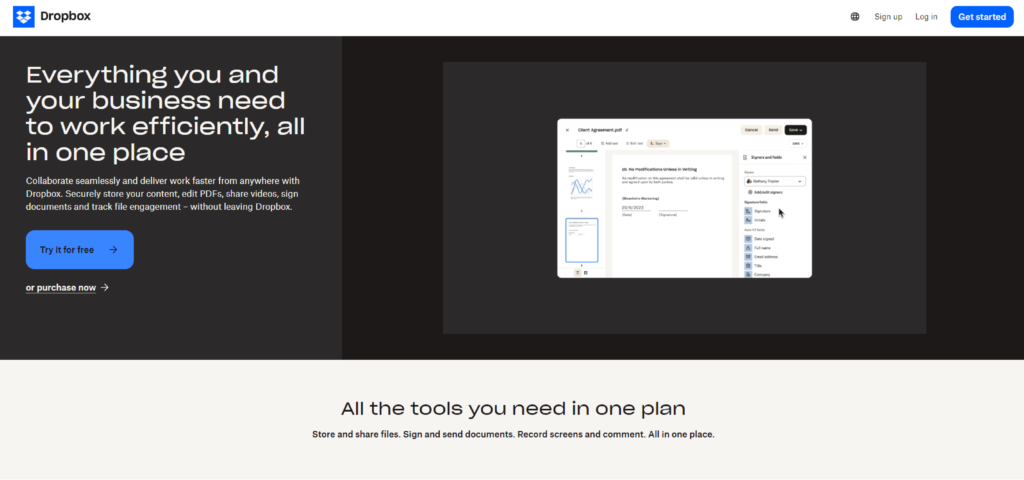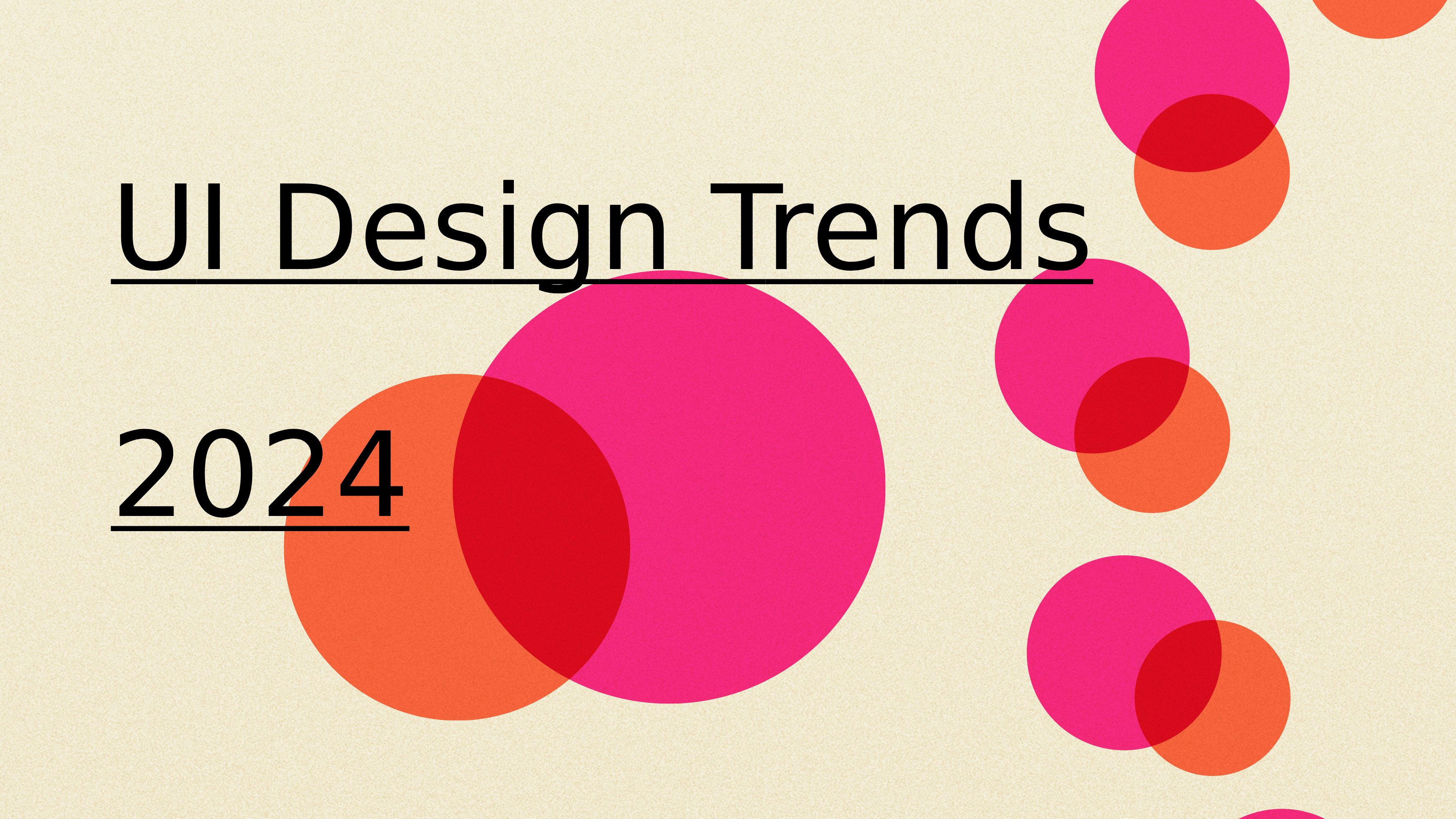Influenced by changes in technology, culture, and user expectations, UI design never stops changing.
With each year, something new crops up, but this year feels different.
This year, we’re pushing the boundaries of design, where digital experiences merge with personal connections and aesthetics meet ethics.
We’re also rethinking how our designs impact users and the world.
Let’s explore the top UI design trends of 2024 and see which leading brands are already rocking these styles 😉
1️⃣ Hyper-Personalisation
This year, hyper-personalisation is redefining how users interact with digital interfaces.
More and more websites are using AI and machine learning to customise experiences for users as individuals.
A classic example is Netflix, which employs AI to tailor not only its content recommendations but also its thumbnails, and even the layout of its interface, depending on the individual’s preference and consumption history.
The same goes for Amazon, which is deeply personalised in the shopping experience: product recommendations, curated deals, and even the home page change based on the shopping habits of the user.
2️⃣ Neo-brutalism
Neo-brutalism has made a bold comeback in 2024, marrying raw, utilitarian aesthetics with a modern twist to traditional Brutalism.
Sites are characterised by highly simplistic and blocky layouts, gigantic typography, and minimalistic colour schemes.
All this is about delivering the content in a very simple way, devoid of any frills from the decorative styles.
The modern Brutalism iteration usually includes smoother animations and more refined colour palettes, merging the rough and the refined and making an unforgettable yet user-friendly visual experience.

3️⃣ Augmented Reality (AR) Integration
In 2024, an ever-increasing number of websites and apps integrate AR to enhance the user’s interaction.
For instance, IKEA Place allows customers to view how furniture may look in their home prior to purchasing.
In such ways, AR gets embedded in smooth forms into the e-commerce experience, bridging the gap between the digital and physical worlds and offering users a more immersive and practical way of engaging with products.
4️⃣ Glassmorphism 2.0
Glassmorphism, characterised by its frosted glass-like effects and translucent layers, continues to evolve this year.
Leading platforms like Apple and Microsoft are incorporating this trend into their interfaces, using it to add depth and a sense of lightness to their designs.
For instance, Apple’s iOS and macOS interfaces use subtle blurs and transparency to create a sense of layering and depth, making the UI feel more dynamic and interactive.
Not to be left behind, Microsoft’s Fluent Design System uses Glassmorphism as well to display visual hints and direct the user’s attention to the elements that require their focus
5️⃣ Eco-Conscious Design
Sustainability has gripped not just the physical world but at the moment is also a design consideration for UX.
Digital spaces are becoming eco-friendly.
This is keying into optimised performance to cut back on energy consumption and digital pollution.
For instance, Mozilla has always been vocal about digital sustainability and called for the production of light, fast websites that move just a small amount of data.
Similarly, Google offers a dark mode across its platforms not only for user comfort but also to reduce energy consumption on OLED screens.
This trend reflects a growing awareness of the environmental impact of digital products, encouraging us to create more sustainable interfaces.
6️⃣ Minimalism
Minimalism continues to be a dominant trend in 2024.
Focusing on simplicity, clarity, and functionality, this design approach emphasises the removal of unnecessary elements, ensuring that the user experience is as straightforward and intuitive as possible.
Apple and Dropbox websites are classic examples of how minimalism is exploited: the lack of distracting, intimidating elements facilitates a better flow of user navigation, so common data blocks can be located.
This reduction lessens users’ cognitive loads and enables them to manoeuvre around easily.

7️⃣ Maximalism
In contrast to minimalism, maximalism embraces boldness, complexity, and a rich visual experience.
In 2024, this trend is gaining traction as we experiment with vibrant colours, intricate patterns, and elaborate typography to create immersive and memorable interfaces.
Sites like Gucci or Vogue set good examples by applying maximalist design to exude the feeling of richness and luxury.
They are not afraid to make a statement with striking visuals that turn heads.
Maximalism allows us to manifest creativity and personality in a way that is visually striking and emotionally engaging.
2024 is a pivotal year for UI design, where the emphasis is on creating experiences that are not just visually striking but also meaningful, inclusive, and sustainable.
The trends we’re seeing—whether it’s the personalised experiences of hyper-personalisation, the raw aesthetics of Neo-Brutalism, or the ethical considerations of eco-conscious design—reflect a deeper commitment to user needs and global responsibilities.
As designers, we are not just shaping how users interact with technology, but also influencing how technology interacts with the world.
The examples from leading websites around the globe show how UI design can evolve to meet new challenges while staying true to its core purpose: enhancing the user experience.
What do you think will be the defining trends of 2025?
How do you see the current trends shaping the future of UI design?
Let’s chat in the comments 😉
Thanks for reading ✨
I hope you found it useful!
This space thrives because of YOU. ❤️
If the resources I share help you grow in your career, a small contribution from you could keep this community strong.
Together, we’re building a space to learn, grow, and support each other on this design journey.
Every bit helps, and by supporting me, you’re directly helping keep this space alive and growing.
Or simply scan this QR code ⬇️

Your support means a lot!
You might also like:
Share this article:




